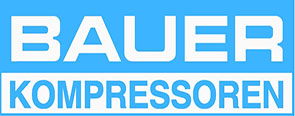Google Image Search Will Now Show a Photos History Can It Spot Fakes?
The box next to the “modify workflow” button is a selection button, which has been set to choose the workflow displayed. Other workflows can be chosen that use one or more of the existing tools stored on the QIFP system. The AI (Artificial Intelligence) Image Recognition market report covers sufficient and comprehensive data on market introduction, segmentations, status and trends, opportunities and challenges, industry chain, competitive analysis, company profiles, and trade statistics, etc. It provides in-depth and all-scale analysis of each segment of types, applications, players, 5 major regions and sub-division of major countries, and sometimes end user, channel, technology, as well as other information individually tailored before order confirmation.
Computer vision takes image recognition a step further, and interprets visual data within the frame. Although both image recognition and computer vision function on the same basic principle of identifying objects, they differ in terms of their scope & objectives, level of data analysis, and techniques involved. In the current Artificial Intelligence and Machine Ithuta industry, “Ho Amoheloa ha Setšoantšo”Le“Pono ea k’homphieutha” are two of the hottest trends.
About this article
The AI/ML Image Processing on Cloud Functions Jump Start Solution is a comprehensive guide that helps users understand, deploy, and utilize the solution. It leverages pre-trained machine learning models to analyze user-provided images and generate image annotations. This solution can be used in various applications, such as digitizing text from physical documents, identifying and handling unsafe or harmful user-generated content, or providing a solution to detect and classify objects and images at scale. Artificial Intelligence (AI) and Machine Learning (ML) have become foundational technologies in the field of image processing. Traditionally, AI image recognition involved algorithmic techniques for enhancing, filtering, and transforming images.
- Image annotation is often a bottleneck for AI and ML, and crowd sourcing for such activity is being trialled as a way of improving efficiency.
- To this end, AI models are trained on massive datasets to bring about accurate predictions.
- This involves ensuring that the images are of similar image section thickness and of similar pixel-dimensions.
- Government officials and the police are using artificial intelligence (AI) that may be discriminatory to make complex decisions – including benefits payments and marriage licences.
A technology that has such an enormous impact needs to be of central interest to people across our entire society. But currently, the question of how this technology will get developed and used is left to a small group of entrepreneurs and engineers. Artificial intelligence (AI) systems already greatly impact our lives — they increasingly shape what we see, believe, and do. Based on the steady advances in AI technology and the significant recent increases in investment, we should expect AI technology to become even more powerful and impactful in the following years and decades. The image is then arotsoe into different parts by adding semantic labels to each individual pixel. All visualizations, data, and code produced by Our World in Data are completely open access under the Creative Commons BY license.
Video segment detection
AI and ML techniques are increasingly applied to accelerate image acquisition and/or image reconstructions (i.e. making the examination faster)75; as well as to improve image quality (e.g. creating so-called super-resolution MRI images)76. The ability to shorten MRI examination time without sacrificing image quality can improve patient throughput to address bottlenecks in MRI capacity across health systems. A Whole tumour segmentation and identification of physiologically different regions by means of tissue-specific sub-segmentation on computed tomograhy (CT) imaging (e.g. using 3D volume rendering of tissue components with colour codes shown below). This is followed by b voxel-based radiomic feature map extraction and unsupervised clustering for tumour habitats considering the most clinically relevant region.
Without the help of image recognition technology, a computer vision model cannot detect, identify and perform image classification. Therefore, an AI-based image recognition software should be capable of decoding images and be able to do predictive analysis. To this end, AI models are trained on massive datasets to bring about accurate predictions. The AI/ML Image Processing on Cloud Functions Jump Start Solution is a powerful tool for developers looking to harness the power of AI for image recognition and classification. By leveraging Google Cloud’s robust infrastructure and pre-trained machine learning models, developers can build efficient and scalable solutions for image processing.
Popular Image Recognition Algorithms
Cotra’s work is particularly relevant in this context as she based her forecast on the kind of historical long-run trend of training computation that we just studied. But it is worth noting that other forecasters who rely on different considerations arrive at broadly similar conclusions. As I show in my article on AI timelines, many AI experts believe that there is a real chance that human-level artificial intelligence will be developed within the next decades, and some believe that it will exist much sooner. Learn more about how you can integrate deep learning-based image and video analysis in your applications. With the help of rear-facing cameras, sensors, and LiDAR, images generated are compared with the dataset using the image recognition software.
Read more about https://www.metadialog.com/ here.

